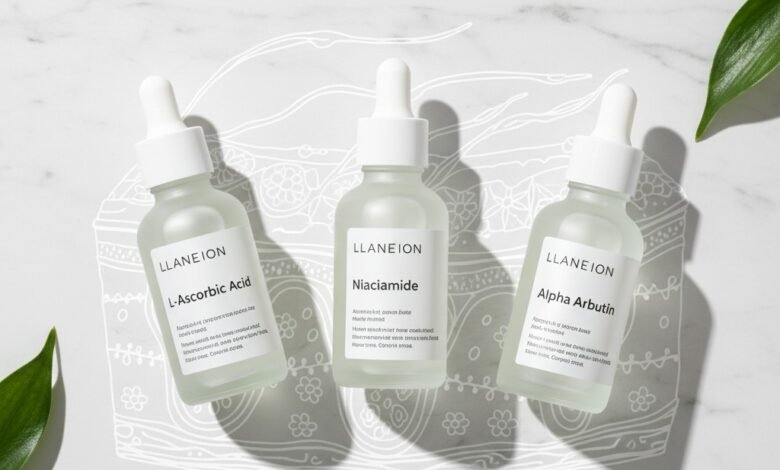Dull Skin vs. Science: A Complete Guide to Choosing the Best Brightening Ingredients (Vitamin C, Niacinamide, Alpha Arbutin)

Understanding the causes of dull skin is the first step to regaining a healthy facial glow. Often, this condition is not merely a result of fatigue, but a manifestation of complex biological processes within the skin, such as the accumulation of dead skin cells, oxidative stress due to environmental aggressors, and uneven melanin production (hiperpigmentation). Instead of randomly trying various products, the most effective approach is to understand the science behind clinically proven brightening active ingredients.
At Salwa Salon, we believe that education is key to successful skincare. Therefore, let’s delve deeply into three main pillars in the world of dermatology for skin brightening: Vitamin C, Niacinamide, and Alpha Arbutin. This article is not just a list, but a comparative guide to help you choose the ingredients that best suit your specific skin condition and goals.
In-Depth Analysis of Vitamin C: The Classic Protector & Brightener
Vitamin C, especially in the form of L-Ascorbic Acid, is the gold standard in the antioxidant and skin brightening category. Its popularity is not without reason; its effectiveness is backed by decades of scientific research.
Mechanism of Action: How Does Vitamin C Fight Dullness?
The power of Vitamin C lies in two main mechanisms. First, as a potent antioxidant, it actively neutralizes free radicals generated by UV exposure and pollution. These free radicals are major triggers of oxidative stress that damage cells and cause dull, uneven skin tone. Second, and most relevant for brightening, Vitamin C directly inhibits the activity of the tyrosinase enzyme. This enzyme is a key catalyst in the melanin production process (melanogenesis). By inhibiting it, the production of dark pigments can be suppressed, causing dark spots, post-inflammatory hyperpigmentation (PIH), and uneven skin tone to gradually fade.
Who Needs Vitamin C the Most?
You will get maximum benefits from Vitamin C if your main concerns are:
- Uneven skin tone due to sun exposure.
- Reddish acne marks (Post-Inflammatory Erythema) or dark ones (Post-Inflammatory Hyperpigmentation).
- Skin that looks tired and has lost its vitality.
Although suitable for most skin types, low pH L-Ascorbic Acid can cause irritation on very sensitive skin. Gentler alternatives such as Sodium Ascorbyl Phosphate (SAP) or Magnesium Ascorbyl Phosphate (MAP) can be an option.
Best Practices & Effective Concentrations
For maximum antioxidant protection, use Vitamin C serum in the morning, before moisturizer and sunscreen. This creates an additional “shield” that enhances the effectiveness of your sunscreen. Look for products with L-Ascorbic Acid concentrations between 10-20%. Concentrations below 8% may be less effective, while above 20% increase the risk of irritation without providing significant additional benefits.
Niacinamide: A Versatile Hero for Skin Barrier & Brightness
Different Mechanism of Action: Melanin Transfer Blockade
If Vitamin C works in the melanin production “factory,” then Niacinamide works in its “distribution pathway.” Niacinamide does not inhibit the tyrosinase enzyme. Instead, it blocks the transfer of melanosomes (sacs containing melanin pigment) from melanocytes (pigment-producing cells) to keratinocytes in the outermost layer of the skin (epidermis). In other words, pigment is still produced, but its distribution to the skin’s surface is inhibited. As a result, the appearance of dark spots and uneven skin tone is significantly reduced.
Ideal User Profile: Almost All Skin Types
The main advantage of Niacinamide is its high tolerability. It is very suitable for:
- Sensitive skin prone to redness due to its anti-inflammatory properties.
- Oily and acne-prone skin due to its ability to regulate sebum production.
- Skin with a damaged skin barrier, as it has been shown to increase ceramide production.
This makes it a very safe brightening option for beginners or those whose skin is reactive to other active ingredients.
Alpha Arbutin: A Specialist Solution for Stubborn Hyperpigmentation
Mechanism of Action: Competitive Tyrosine Mimic
Alpha Arbutin is a derivative of hydroquinone purified from plants like bearberry. Its mechanism is very clever and specific. Its structure is similar to tyrosine, an amino acid required by the tyrosinase enzyme to initiate melanin production. Alpha Arbutin works by “mimicking” and binding itself to the active site of the tyrosinase enzyme. As a competitive inhibitor, it occupies the place that should be filled by tyrosine, thereby stopping the melanin production process before it even begins. Its high effectiveness makes it one of the most popular and safe alternatives to hydroquinone.
Primary Candidates: Dark Spots and Melasma
Focus on Alpha Arbutin if your primary goal is to address:
- Dense and stubborn dark spots (solar lentigo).
- Melasma, which is hormonal hyperpigmentation often appearing on the cheeks, forehead, and upper lip.
- Very dark and persistent acne marks.
Look for products with an Alpha Arbutin concentration of around 1-2% for optimal and safe results.
Vitamin C vs. Niacinamide vs. Alpha Arbutin: Which One is Right for You?
Choosing among the three depends on identifying your most dominant skin concern. Here is a comparative breakdown to help you decide:
Vitamin C (L-Ascorbic Acid)
- Primary Mechanism: Inhibits tyrosinase enzyme
- Target Concerns: General dullness, antioxidant protection, new acne marks
- Best Skin Type: Normal, Combination, Oily (caution for very sensitive skin)
- Irritation Potential: Low to Moderate
Niacinamide
- Primary Mechanism: Inhibits melanin transfer
- Target Concerns: Uneven skin tone, redness, weak skin barrier, large pores
- Best Skin Type: All skin types, including sensitive, acne-prone, and rosacea
- Irritation Potential: Very Low
Alpha Arbutin
- Primary Mechanism: Competitive inhibitor of tyrosinase enzyme
- Target Concerns: Dense dark spots, melasma, stubborn hyperpigmentation
- Best Skin Type: All skin types with specific hyperpigmentation issues
- Irritation Potential: Very Low
Layering Strategy: Combining Strengths for Maximum Results
You don’t have to choose just one. All three ingredients can work synergistically if used correctly. Here’s an example routine you can implement:
Morning Routine:
- Facial Cleanser
- Toner (optional)
- Vitamin C Serum (for antioxidant protection)
- Alpha Arbutin Serum (if you have specific dark spot targets)
- Moisturizer (can be one already containing Niacinamide to strengthen the barrier)
- Sunscreen (Mandatory!)
Evening Routine:
- Double Cleansing
- Toner/Essence
- Alpha Arbutin Serum and/or Niacinamide Serum
- Moisturizer/Night Cream
For more personalized and in-depth layering guidance tailored to your skin type, consider downloading our Exclusive Ebook: “The Art of Layering for Glowing Skin”.
Conclusion: Choosing Science-Based Skin Brighteners, Not Just Trends
Addressing dull skin and hyperpigmentation is a marathon, not a sprint. The key to success lies in understanding the “why” and “how” an ingredient works. Vitamin C is a universal protector and brightener, Niacinamide is a versatile balancer and strengthener, while Alpha Arbutin is a specialist for stubborn targets. With this knowledge, you can now make smarter, more informed decisions in building a skincare routine that truly delivers results.






